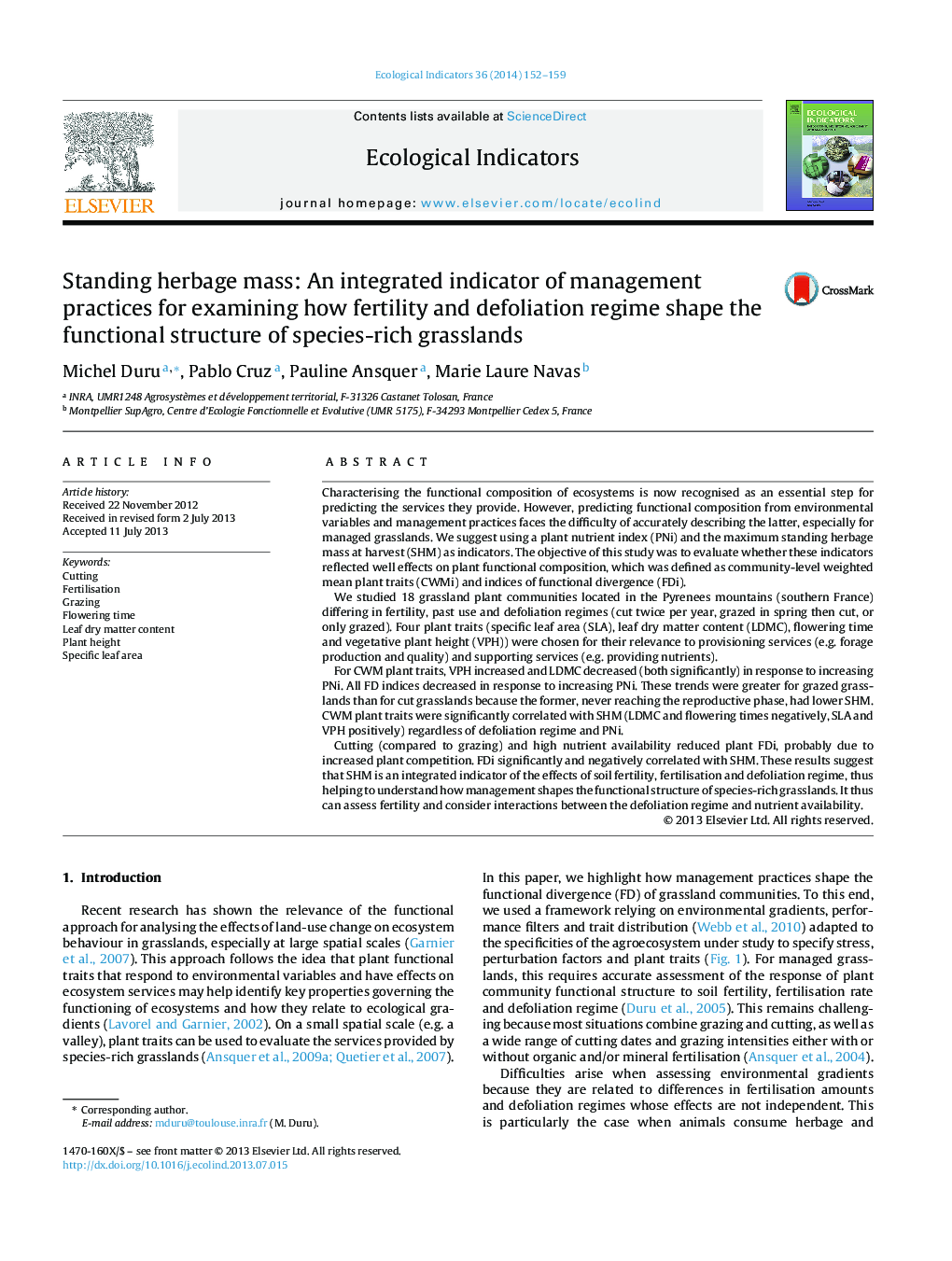| Article ID | Journal | Published Year | Pages | File Type |
|---|---|---|---|---|
| 4373305 | Ecological Indicators | 2014 | 8 Pages |
•Plant functional composition was shaped by nutrient and defoliation management.•Plant functional composition responds more strongly to grazing than mowing.•Standing herbage mass is an integrated indicator of nutrient and defoliation management.•Standing herbage mass predicted functional composition better than raw management variables.
Characterising the functional composition of ecosystems is now recognised as an essential step for predicting the services they provide. However, predicting functional composition from environmental variables and management practices faces the difficulty of accurately describing the latter, especially for managed grasslands. We suggest using a plant nutrient index (PNi) and the maximum standing herbage mass at harvest (SHM) as indicators. The objective of this study was to evaluate whether these indicators reflected well effects on plant functional composition, which was defined as community-level weighted mean plant traits (CWMi) and indices of functional divergence (FDi).We studied 18 grassland plant communities located in the Pyrenees mountains (southern France) differing in fertility, past use and defoliation regimes (cut twice per year, grazed in spring then cut, or only grazed). Four plant traits (specific leaf area (SLA), leaf dry matter content (LDMC), flowering time and vegetative plant height (VPH)) were chosen for their relevance to provisioning services (e.g. forage production and quality) and supporting services (e.g. providing nutrients).For CWM plant traits, VPH increased and LDMC decreased (both significantly) in response to increasing PNi. All FD indices decreased in response to increasing PNi. These trends were greater for grazed grasslands than for cut grasslands because the former, never reaching the reproductive phase, had lower SHM. CWM plant traits were significantly correlated with SHM (LDMC and flowering times negatively, SLA and VPH positively) regardless of defoliation regime and PNi.Cutting (compared to grazing) and high nutrient availability reduced plant FDi, probably due to increased plant competition. FDi significantly and negatively correlated with SHM. These results suggest that SHM is an integrated indicator of the effects of soil fertility, fertilisation and defoliation regime, thus helping to understand how management shapes the functional structure of species-rich grasslands. It thus can assess fertility and consider interactions between the defoliation regime and nutrient availability.
Graphical abstractFigure optionsDownload full-size imageDownload as PowerPoint slide
